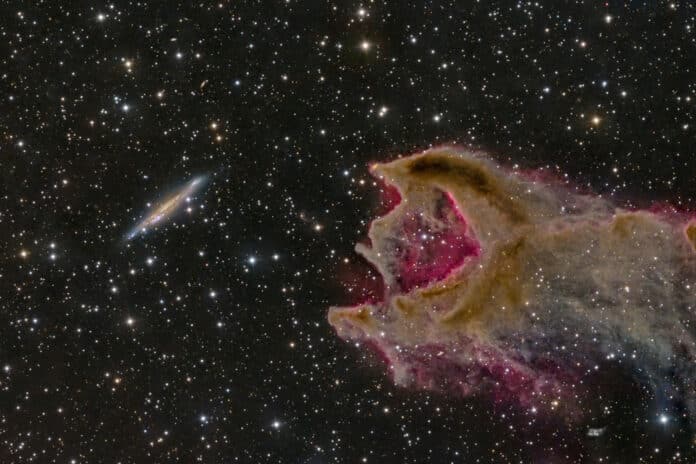On January 4, 2023, NASA unveiled a fascinating image of – the Globule and the galaxy- as part of the Astronomy Picture of the Day.
Dusty heads and long tails are the key attributes of cometary globules. These features give cometary globules their distinct visual characteristics. A lot of times, globules are where stars are born, and many have young stars visible in their centers. The head of this Globule has ruptured, making it uncommon.
The Globule, appearing in the image, is CG4 (also known as The Hand of God). It is located about 1,300 light-years away from Earth in the southern constellation of Puppis. Its “head” is some 1.5 light-years across, and its “tail” is about eight light-years long.
Although the Globule’s head is opaque, it glows due to the hot, newly formed stars’ light. Their energy is progressively stripping the microscopic debris that scatters the starlight from the Globule’s dusty head. In this Globule, electrically charged hydrogen emits a dim red glow.
In the image, it appears like the Globule is about to devour the spiral galaxy ESO 257-19 (PGC 21338) in the upper left. In reality, this galaxy is more than a hundred million light-years further away and only placed near CG4 by chance superposition.
